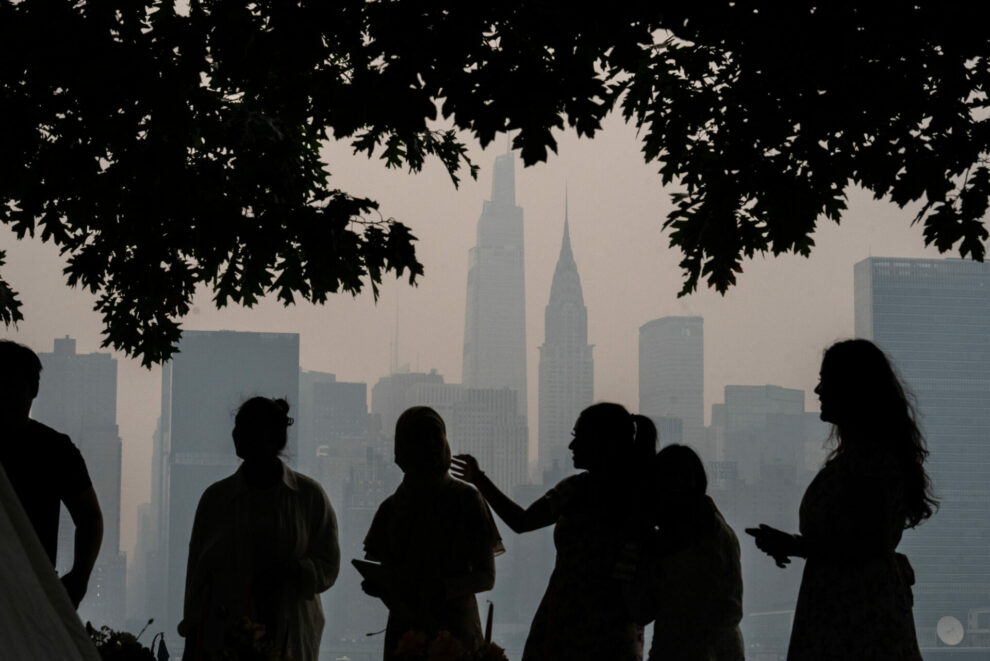Canada experienced its worst wildfire season in history this year, with more than 37 million acres burned so far. Smoke from the fires drifted into the US, covering regions from Oregon to Illinois to New York.
Smoke from Canadian wildfires that blanketed US cities this spring and summer were linked to spikes in emergency department visits for asthma in New York and other regions of the country.
US asthma visits to emergency departments were 17% higher than expected over 19 days that wildfire smoke triggered air quality alerts for sensitive groups between April 30 and Aug. 4, according to a Centers for Disease Control and Prevention analysis.
Nearly 26 million people in the US have asthma, according to the Asthma and Allergy Foundation of America. Wildfire smoke contains matter such as PM2.5 particles that can worsen air quality and exacerbate the condition. The number of actual asthma-related medical visits may be underestimated by the results, the report said, because it excluded people who did not seek care or visited a doctor’s office.
“As wildfires and wildfire smoke increase across the United States, symptoms of wildfire smoke exposure are of increasing public health concern,” the report said.
The study of data from the CDC’s National Syndromic Surveillance Program looked at increases in visits in 10 US regions over the roughly three-month period. Region 2, which includes New York State experienced the biggest increase in asthma-associated emergency visits, the study found. There were 364 excess visits in the region, which also includes New Jersey, from June 6-8.
Daily counts of PM2.5 were highest across most of the state on June 7, according to a separate study in CDC’s Morbidity and Mortality Weekly Report. Statewide asthma-associated visits almost doubled on that day to 147 visits compared with the mean number of such visits during June 1–5, the study said.
Canada experienced its worst wildfire season in history this year, with more than 37 million acres burned so far. Smoke from the fires drifted into the US, covering regions from Oregon to Illinois to New York. Scientists say the extreme wildfire season and its impacts may become more frequent as a result of climate change.









